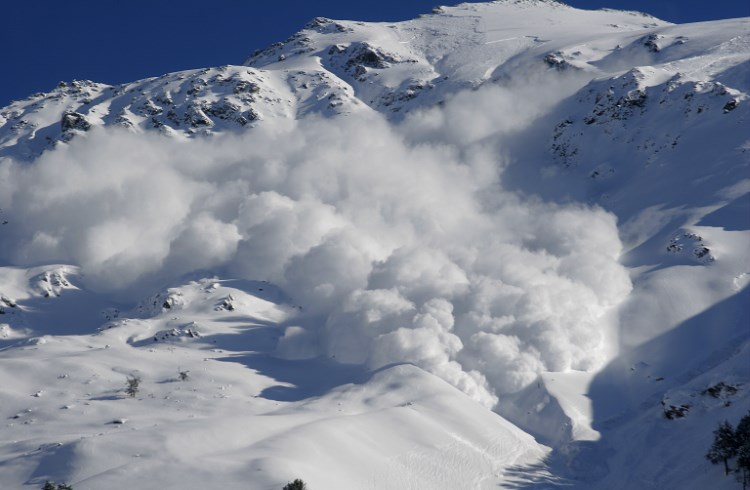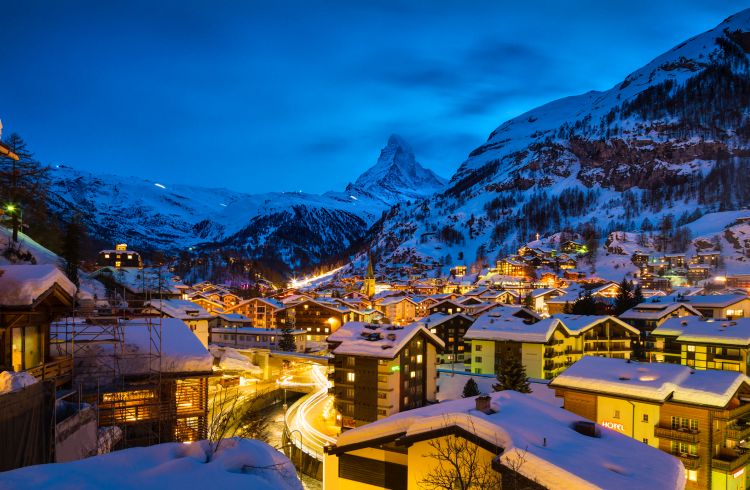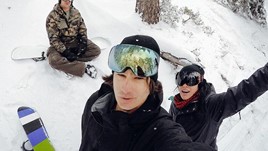Essential Snow and Avalanche Safety Travel Tips
Learn how to avoid an avalanche and how to survive if you do get caught in one. Nomad Bill shares his experience taking an avalanche safety course.
 Photo © Getty Images / med_ved
Photo © Getty Images / med_ved
- The avalanche class experience
- Planning for avalanche territory
- What to do if you feel yourself getting caught in an avalanche
- More resources
There’s a certain majesty – and terror – in looking up at steep, snow-covered mountain peaks, even in the confines of a patrolled ski resort like Lake Tahoe’s Kirkwood. “You know, the thing about the ski runs here is that only 20% are man-made gaps from trees we cut down. The rest were created by avalanche paths through the forest.” says Andrew DeGuzman, backcountry guide and instructor at Expedition Kirkwood. It’s enough to make you want to enroll in one of their Avalanche Safety classes, as I did, even if not planning to head to the backcountry.
During the 2021 winter season, avalanches killed 37 people across the US – and not just backcountry skiers. The Colorado Avalanche Information Center reported snowmobilers, hikers, climbers, and snowshoers accounted for nearly half the total fatalities, the largest number in over a decade. In the words of the avalanche training manual, “Nature is notorious for keeping quiet most of the time and providing unforgiving feedback when you want it least.” So, no matter what your outdoor winter activity, it’s a good idea to at least brush up on some snow safety essentials in a class like Kirkwood’s AIARE Rec Level 1 course.
AIARE, the American Institute for Avalanche Research and Education, is an organization that develops and supplies training programs to more than 100 different course-providers across the U.S., for both recreational and professional customers. The REC Level 1 class about avalanche safety basics is tailored for skiers and snowboarders, but relevant for anyone who may explore in snowy, mountainous terrain. It can be followed with further AIARE courses on snow science, avalanche rescue, and backcountry guiding.
The avalanche class experience
The AIARE REC Level 1 class typically takes three days, with a combination of classroom (or online sessions in the COVID era) and on-mountain, hands-on training. Students read (or download) AIARE’s 100-page manual on avalanche and snow safety, then take a series of quizzes on the materials.
The biggest takeaway from the course materials is that the best way to stay safe in avalanches is to avoid them altogether – and the best way to do that is to study, study, study the terrain and the weather and snow conditions in the specific area you’re traveling. You’ll learn to identify key features that indicate avalanche-prone slopes and snowpack.

But there’s no substitute for getting out in the snow and testing your knowledge in a safe, supervised environment. “The great thing about Kirkwood,” says instructor DeGuzman, “is that we have typical avalanche terrain in-bounds, so you can see all your textbook lessons in person.” While that sounds dangerous, resort Ski Patrol are experts at safely clearing the terrain before the mountain opens to the public. The avalanche class tours around Kirkwood, with instructors pointing out (and questioning students on) potential avalanche start points, slide paths, and safety zones.
The class also tests student skills with avalanche transceivers and probes. Teams of two bury a backpack with a beacon, while their partners try to find it with their transceiver and dig it out with probe and shovel. What seems like a simple task I found to be tricky, walking right over my hidden “victim” many times before I properly interpreted the transceiver signals, showing the importance of practicing with your equipment.
The final day of AIARE Rec-1 class at Kirkwood includes a nearby backcountry tour, with skins for uphill climbing on skis or split snowboards. The instructors give further guidance on potential avalanche risk-zones, with the students probing and sampling snow with their tools to explore the dynamics of the snowpack. “It’s important to remember you’re not just skiing on the surface of the snow, you’re skiing on everything four feet or more beneath it,” says DeGuzman, revealing hidden ice sheets that can turn a fluffy snow field into a danger zone.
For a final exam of sorts, students get a backcountry challenge to find and “rescue” two hidden backpacks buried by the trailing instructor. Even saving these inanimate objects drives an adrenaline surge for us rescuers as the clock ticks valuable seconds away. Backpacks saved, the class skis back inbounds, with a renewed respect for avalanche country, and armed with some knowledge and tools to help manage the risks.
Planning for avalanche territory
Some high-level tips from the AIARE curriculum:
- Prepare: “Know Before You Go” – research conditions, forecasts, and terrain at the place you’re looking to explore. Plan for alternate routes in case of changing conditions and share your itinerary with someone outside your group. Bring communications that function outside of cellphone range (radios, satellite phones).
- Plan: if you’re venturing into avalanche-prone terrain, be sure to have the right equipment and know how to use it. Do the “BEST” Trailhead check for avalanche transponders, making sure your Batteries are charged, your Electronics are working right, and the Search and Transmit functions both work. Have a pack with shovels, avalanche probes, first aid kits, and layers of weather-appropriate clothing.
- Travel safely: monitor conditions as you go, and recognize avalanche terrain, working around it to reduce risk. Travel together, decide together – listen to every voice and respect any veto.
What to do if you feel yourself getting caught in an avalanche
- Yell! (this will likely come naturally). Call out for attention from the rest of your group.
- Try to exit the side of the avalanche (not outrun it). Snow moves slower at the edges of an avalanche.
- If caught in the middle of a slide, try to stop your motion using your gear or bushes or trees.
- If you can’t exit the slide, ditch your skis, curl into a ball, keep your backpack on for protection, and hold your hands in front of your face to keep your airway clear.
- If buried in snow and you can’t fight to surface, remain calm (as difficult as this sounds) to conserve air.
- If someone in your group gets buried, call for help, but stay at the scene to attempt rescue with beacon probes and shovels as the first few minutes are most essential.
More resources
Avalanche.org: nationwide forecasting and situation reports of avalanche dangers in popular travel areas
Weather.gov: National Weather Service forecasting and current conditions
Avtraining.org: AIARE website with training programs and links to local snow safety class providers that can be found at or near ski resorts across the US. Similar programs operate in Canada and Europe
Local avalanche info websites: check the local websites for areas you plan to travel, such as the Colorado Avalanche Information Center, or SierraAvalancheCenter.org for the Lake Tahoe area
Kirkwood.com: ski resort south of Lake Tahoe, CA, offering a full series of AIARE classes through their Expedition Kirkwood program
Related articles
Simple and flexible travel insurance
You can buy at home or while traveling, and claim online from anywhere in the world. With 150+ adventure activities covered and 24/7 emergency assistance.
Get a quote


No Comments